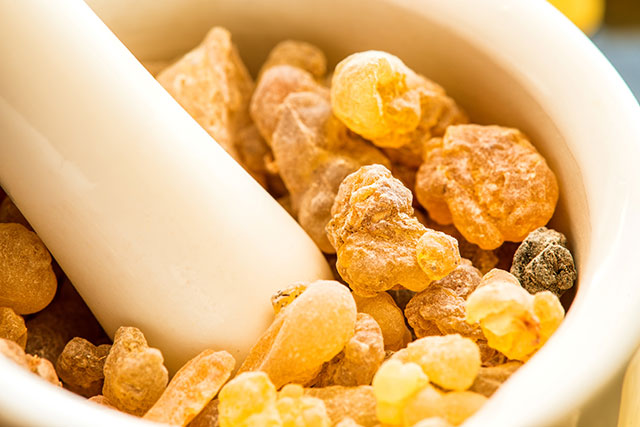Sesame seeds are packed with health benefits – here are 4 ways they help the body
11/15/2019 / By Grace Olson

Sesame seeds are small, but they are packed with health benefits. They have been used for thousands of years in different cultures, including India, China, and Burma. Several studies have backed their health claims. Read on to find out where sesame seeds come from and how they benefit the body.
Open sesame
Sesame seeds come from the sesame plant (Sesamum indicum), a prized oil crop produced in many countries. When ripe, the sesame capsules split and release the seeds – hence the phrase, “open sesame.”
Sesame seeds are rich in oil and are commonly used in baking and other food industries. Their oil is used for cooking, but it can also be used to make soaps and perfumes. Once the oil is extracted from the seeds, the remnants (called sesame meal) are often used as high-protein feed for livestock.
Aside from being delicious, sesame seeds have been used in Indian and Chinese traditional medicine. Studies affirm that adding sesame seeds to meals has a lot of potential health benefits. (Related: Sesame seeds may relieve liver damage caused by modern drugs.)
Here are four ways sesame seeds help the body:
1. They have anti-aging properties
Sesame seeds are filled with antioxidants, which counter the effects of oxidative stress. These effects reveal themselves as a person grows older, leading to age-related conditions. Fatigue, muscle strain, and cognitive decline are some signs of damage from oxidative stress.
Studies have found that consuming sesame seeds helps improve those effects. In one study, supplementing sesame seeds in the diets of patients with osteoarthritis reduced inflammation and exhibited improved stress biomarkers.
2. They reduce pain and inflammation
Pain and inflammation are closely related. When inflammation occurs in one part of the body, a person can sometimes feel it and it registers as pain.
One study showed that sesame seeds helped reduce inflammatory markers among diabetic patients taking standard insulin treatment. In another study, patients who had painful knee osteoarthritis reported less pain after eating sesame seeds for two months.
3. They can improve heart health
Sesame seeds are rich in fiber, which is known to prevent cardiovascular disease, obesity, and Type 2 diabetes. Three tablespoons of sesame seeds provide 12 percent of the daily recommended intake.
Moreover, studies have shown that sesame seeds can help reduce high cholesterol and triglycerides, which are risk factors for heart disease. The seeds contain healthy fats and two plant compounds – lignans and phytosterols – which are known to lower cholesterol levels.
Another risk factor that sesame seeds address is high blood pressure. Compounds like vitamin E and other antioxidants prevent plaques from building up and narrowing the arteries.
Additionally, sesame seeds are rich in magnesium, which helps lower blood pressure.
4. They have anti-cancer compounds
Researchers once believed that flaxseeds had the highest amount of lignans. Lignans are bioactive compounds found in plants and food that are known to be chemoprotective and anti-carcinogenic. However, recent studies have found that sesame seeds contain more lignans than flaxseeds.
In one study conducted on mice, researchers found that sesame seeds can potentially help treat breast cancer. They compared the effects of sesame seeds and flaxseeds on breast cancer tumor growth. Researchers found that both seeds reduced the size of the breast tumor, but the effect was more pronounced for sesame seeds. They suggested that sesame seeds were better at inducing apoptosis, a programmed cell death that allows the body to clean out damaged cells.
Adding sesame seeds to meals
Sesame seeds can be added to a wide variety of foods, including yogurt, salads, sauces and baked goods. In order to make the most of their benefits, try the following tips:
- Use whole, organic seeds. Grind these into condiments and add them to different foods.
- Avoid toasted sesame oil. Aside from oxidation, the fiber content is also removed. This reduces the antioxidant benefits of lignans.
- For taste, toast the seeds. If a person simply wants an enhanced taste, the sesame seeds can be toasted on a pan or in an oven. Keep the heat at 350 F and stir occasionally.
They may be small, but sesame seeds pack a lot of health benefits. They are easy to add to meals, providing not only flavor but also a nutritional boost. Learn more about the benefits of consuming sesame and other seeds at Seeds.news.
Sources include:
Submit a correction >>
Tagged Under:
anti-aging, anticancer, disease treatments, functional food, heart health, longevity, Osteoarthritis, pain relief, prevention, seeds, sesame seeds
This article may contain statements that reflect the opinion of the author
RECENT NEWS & ARTICLES
COPYRIGHT © 2017 PREVENT CANCER NEWS





















